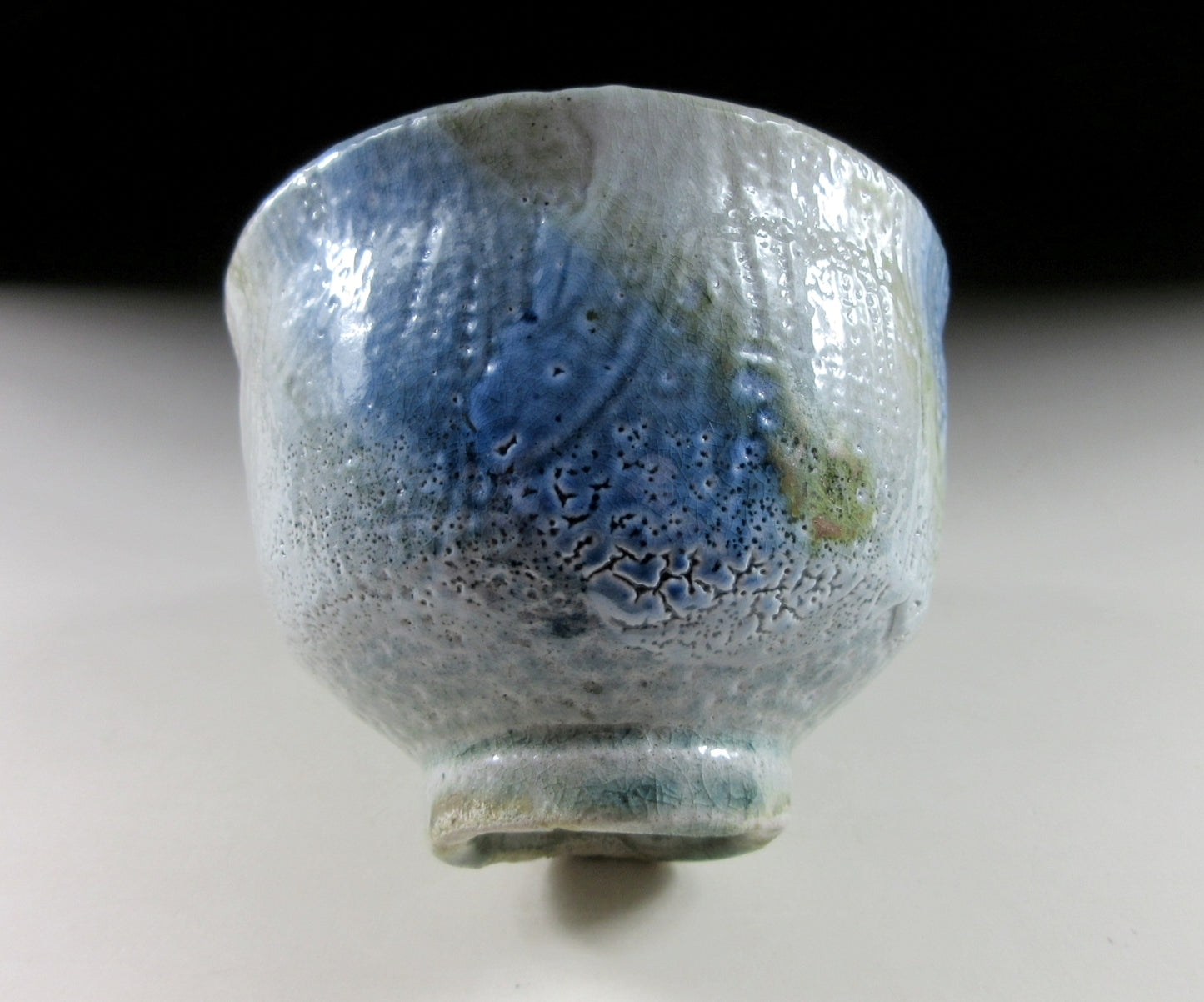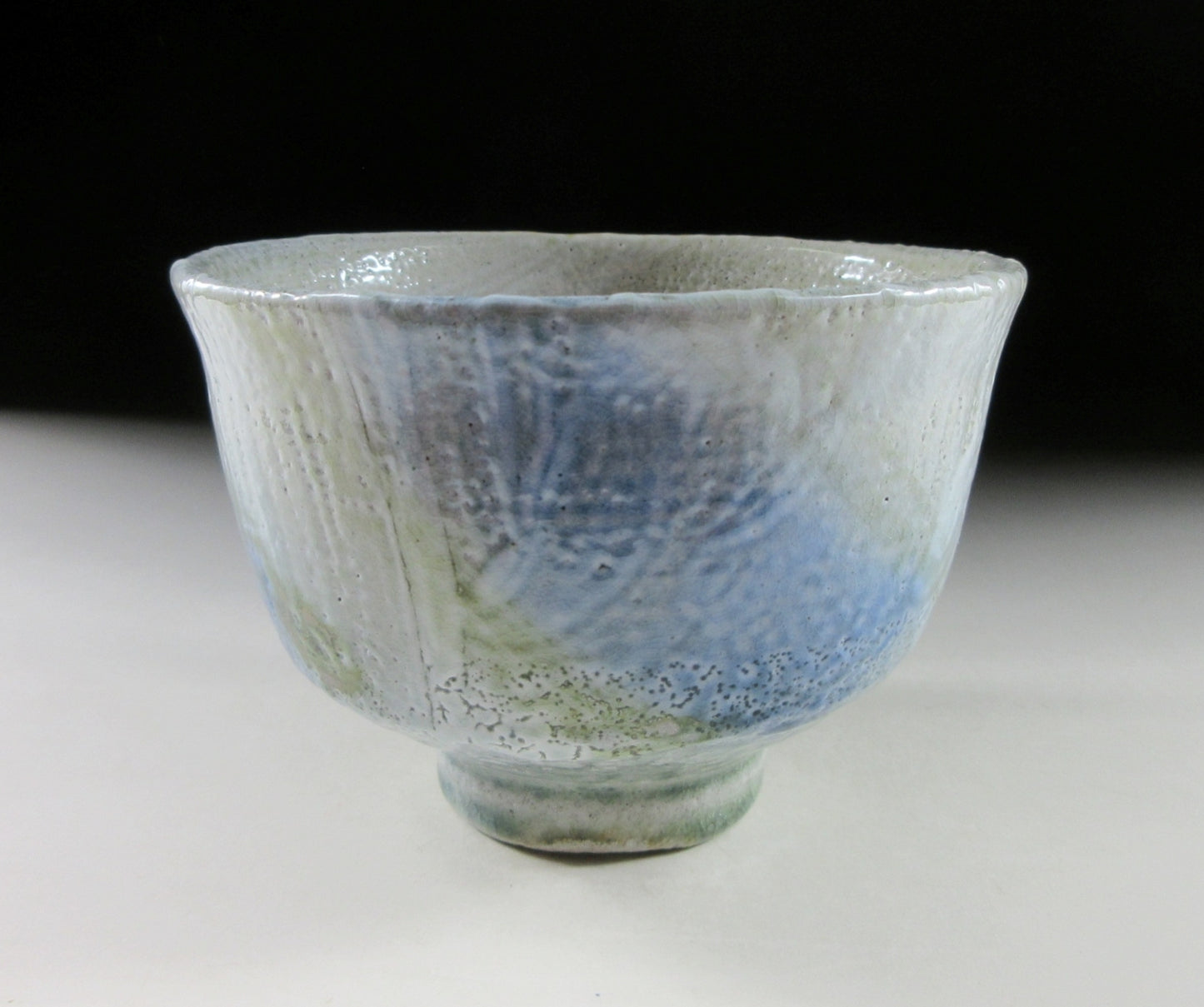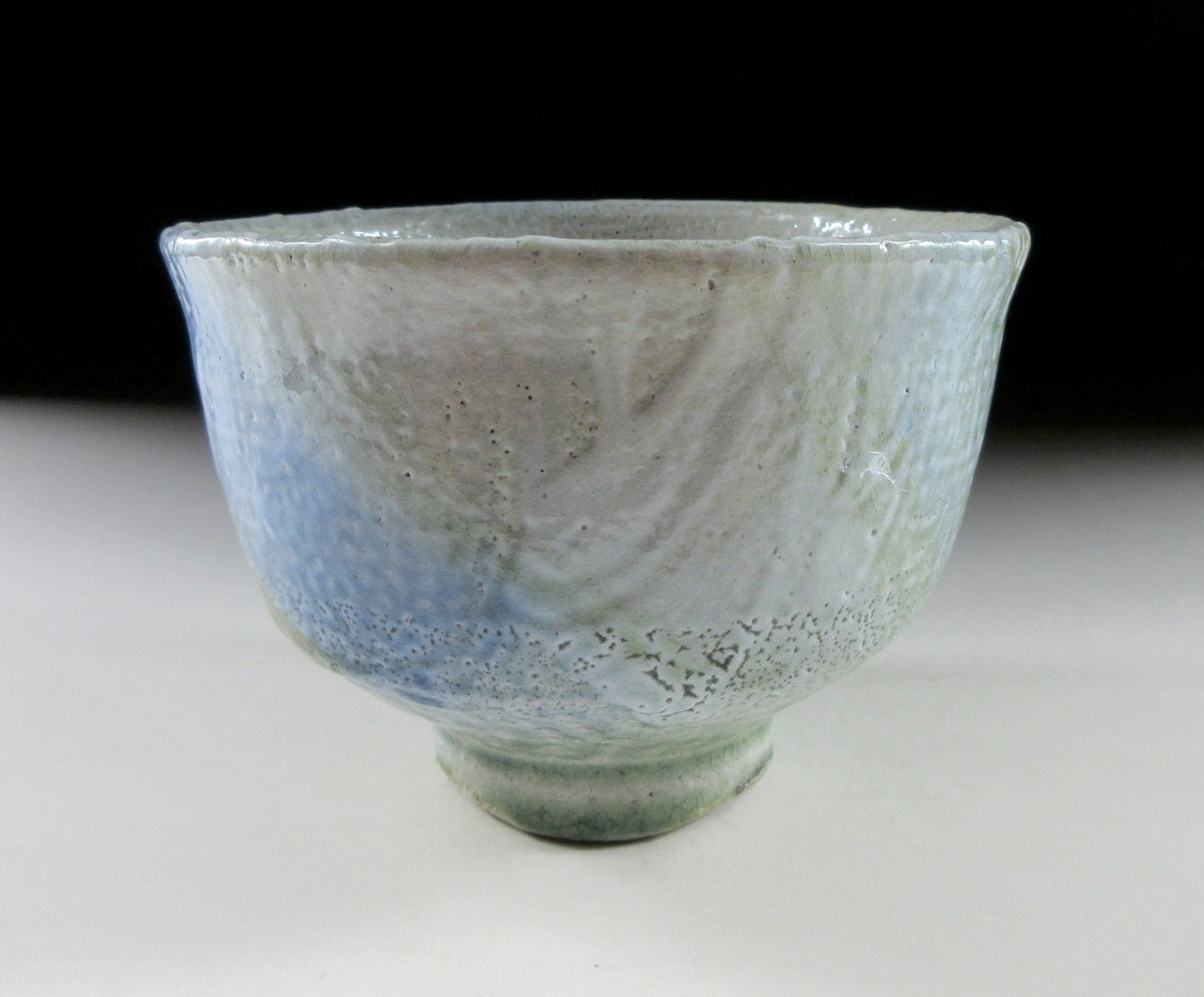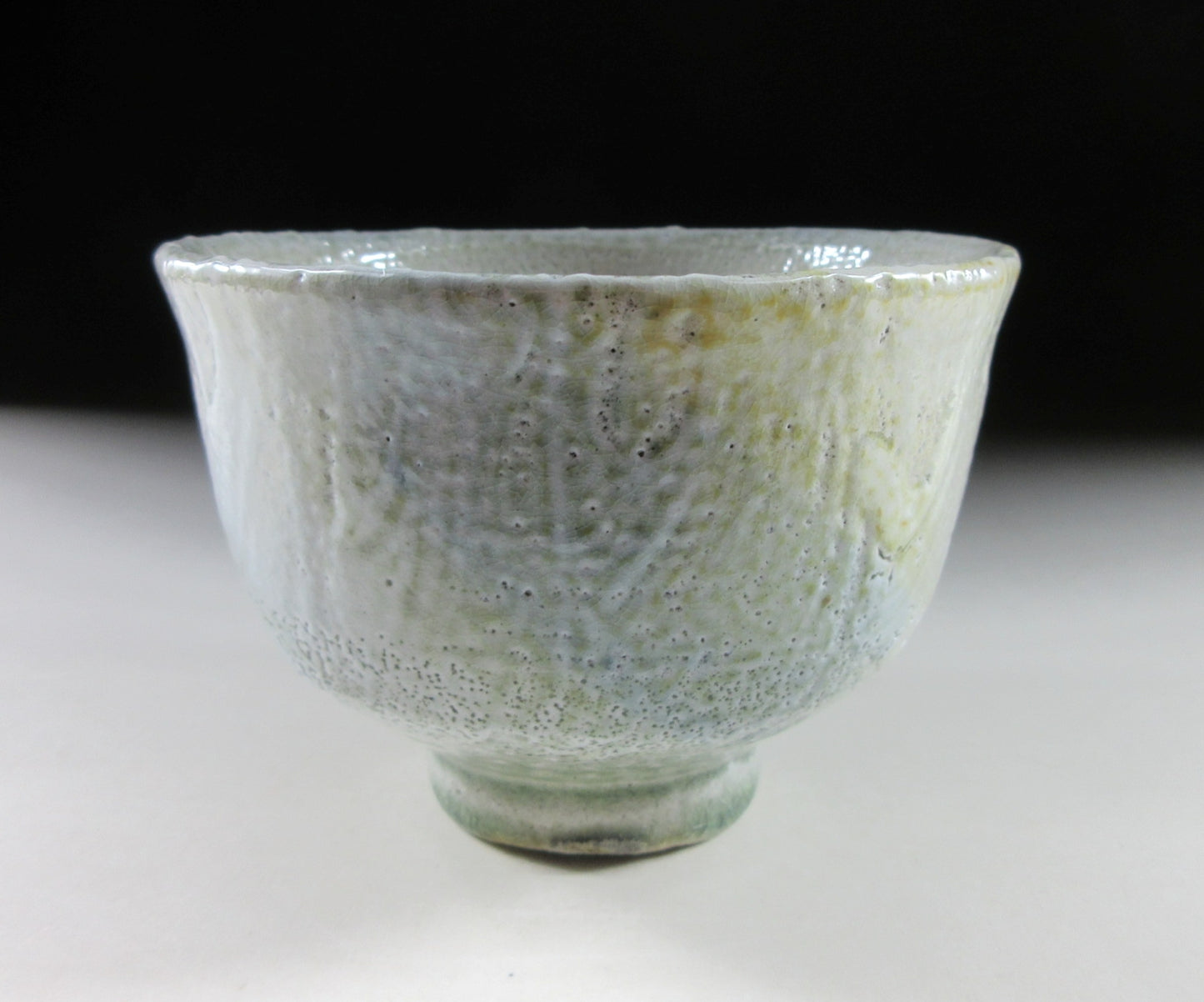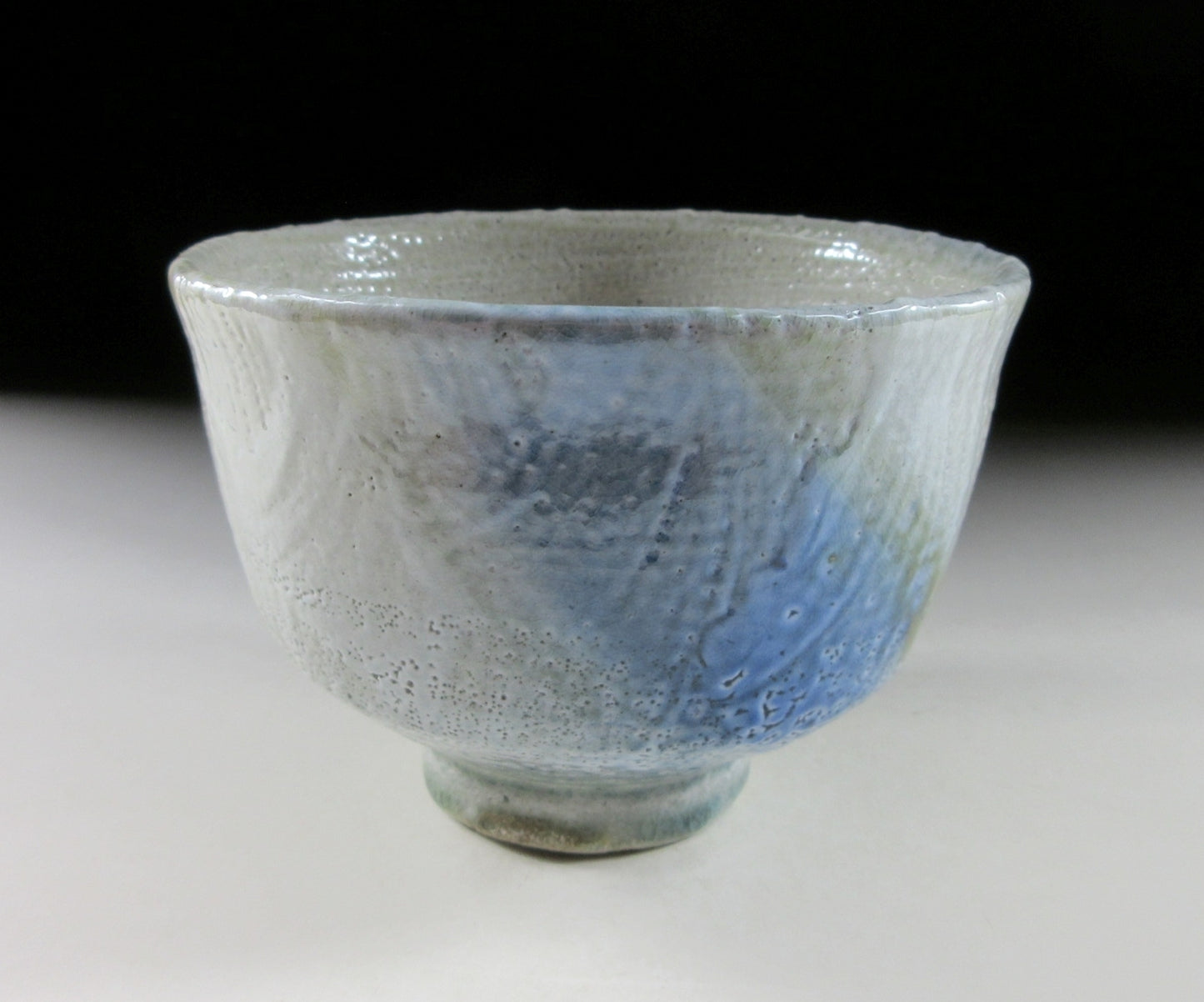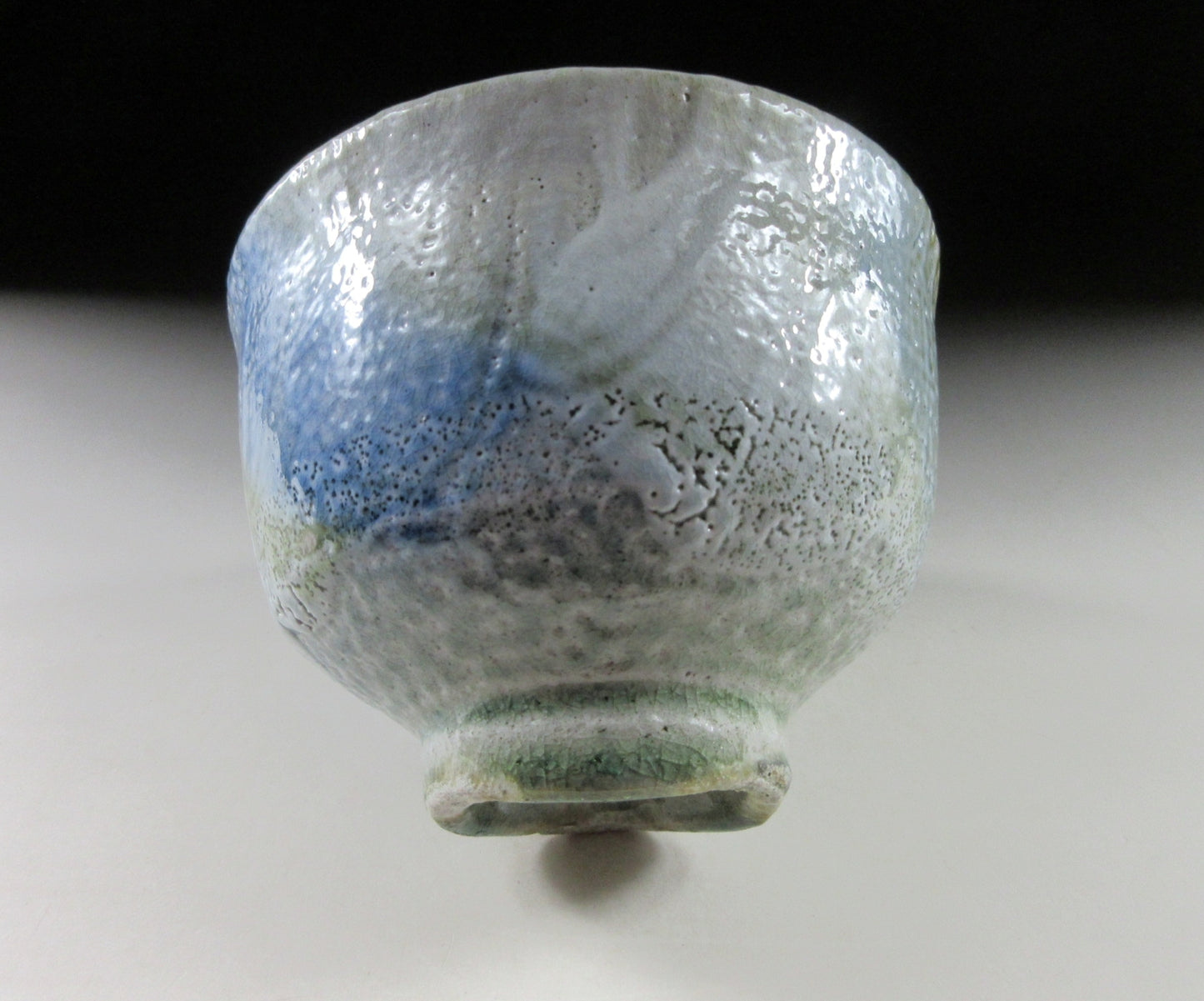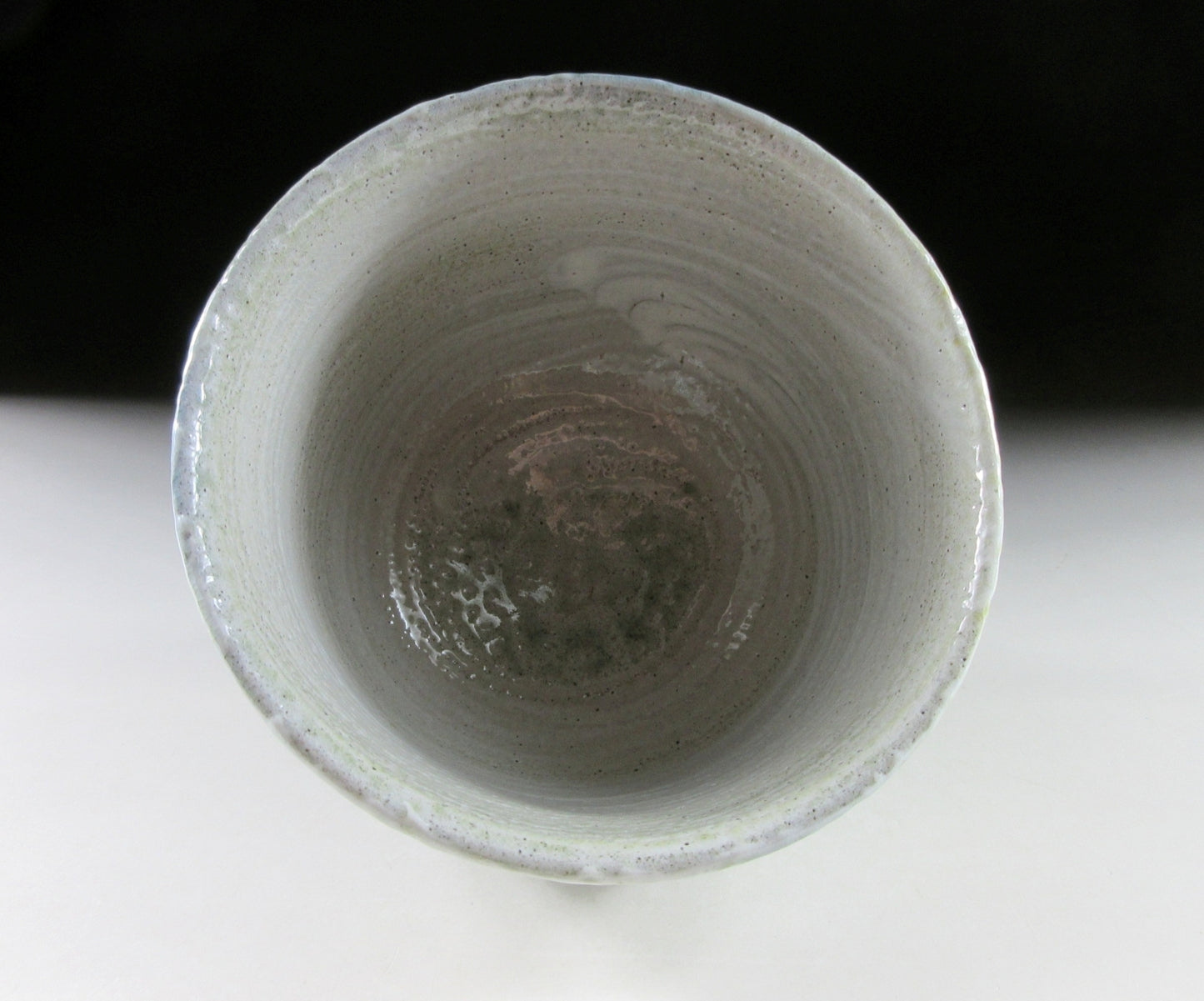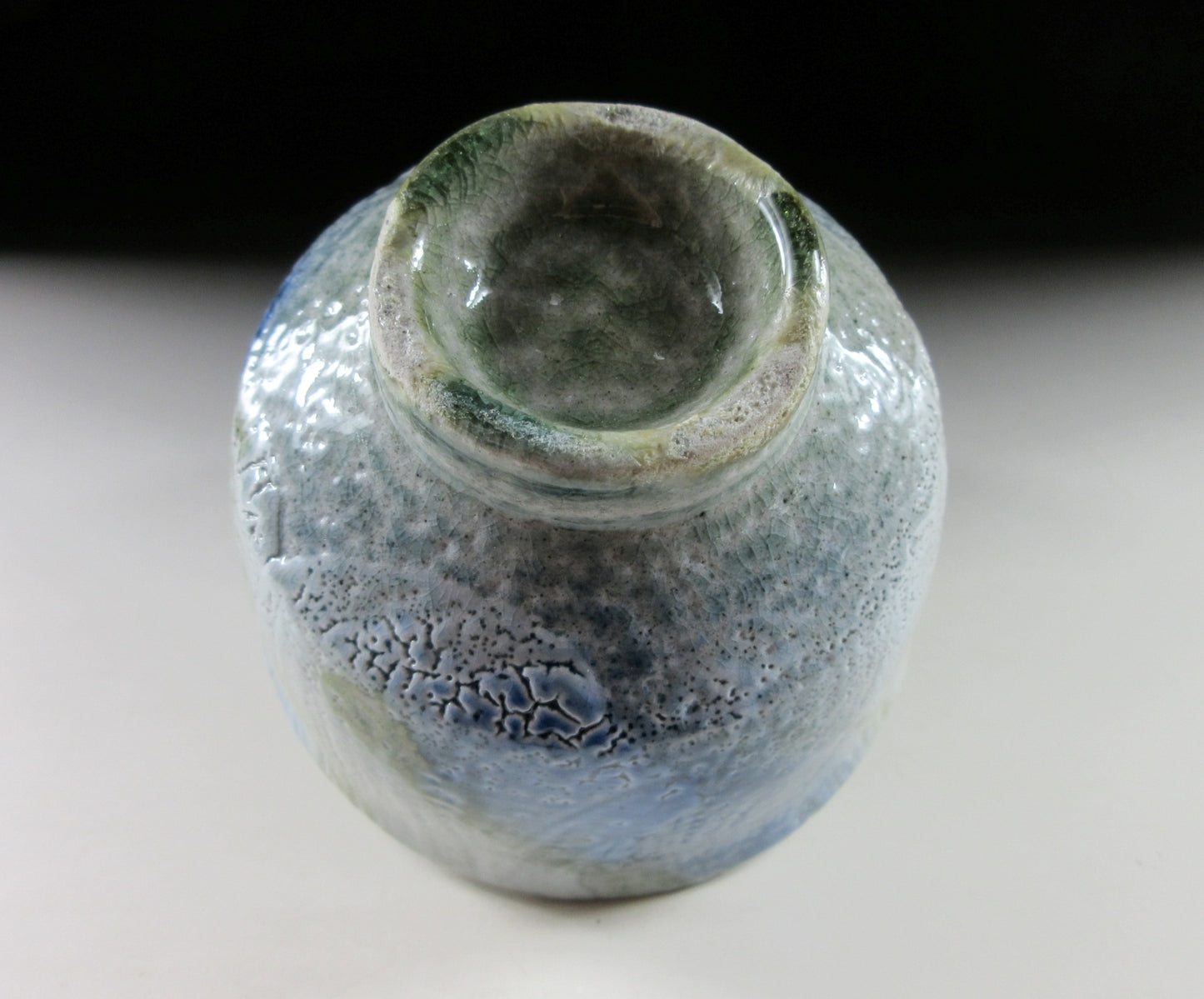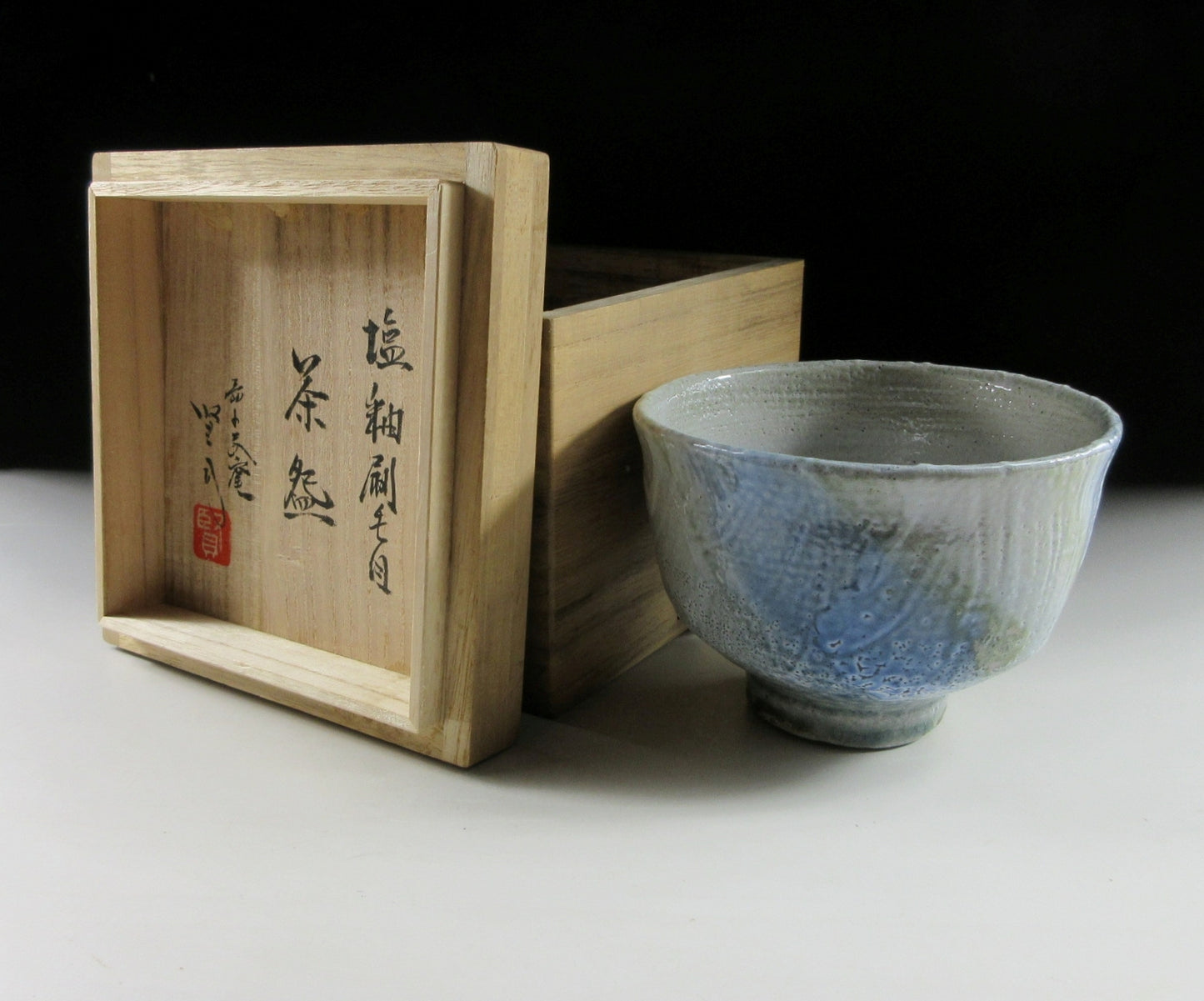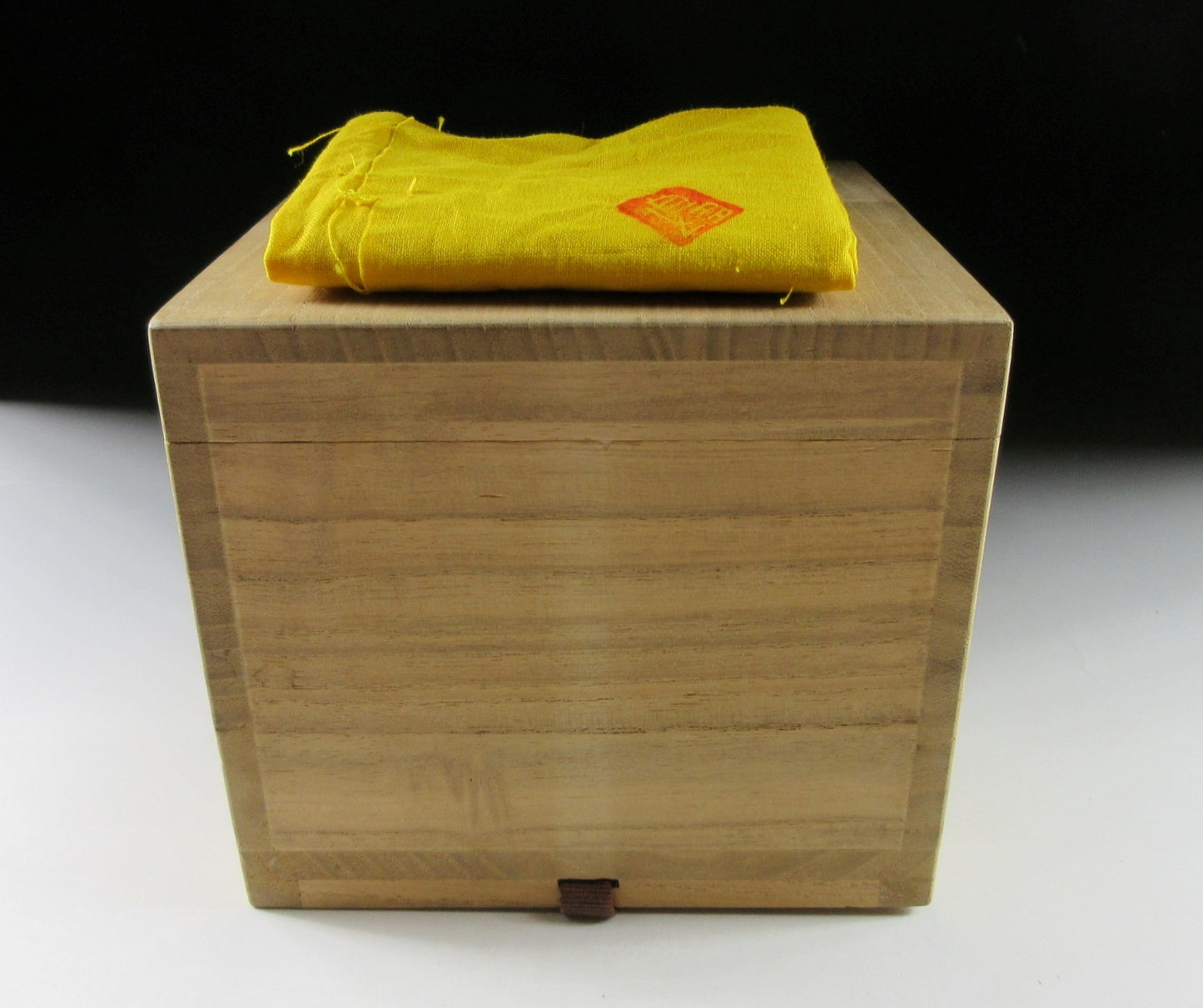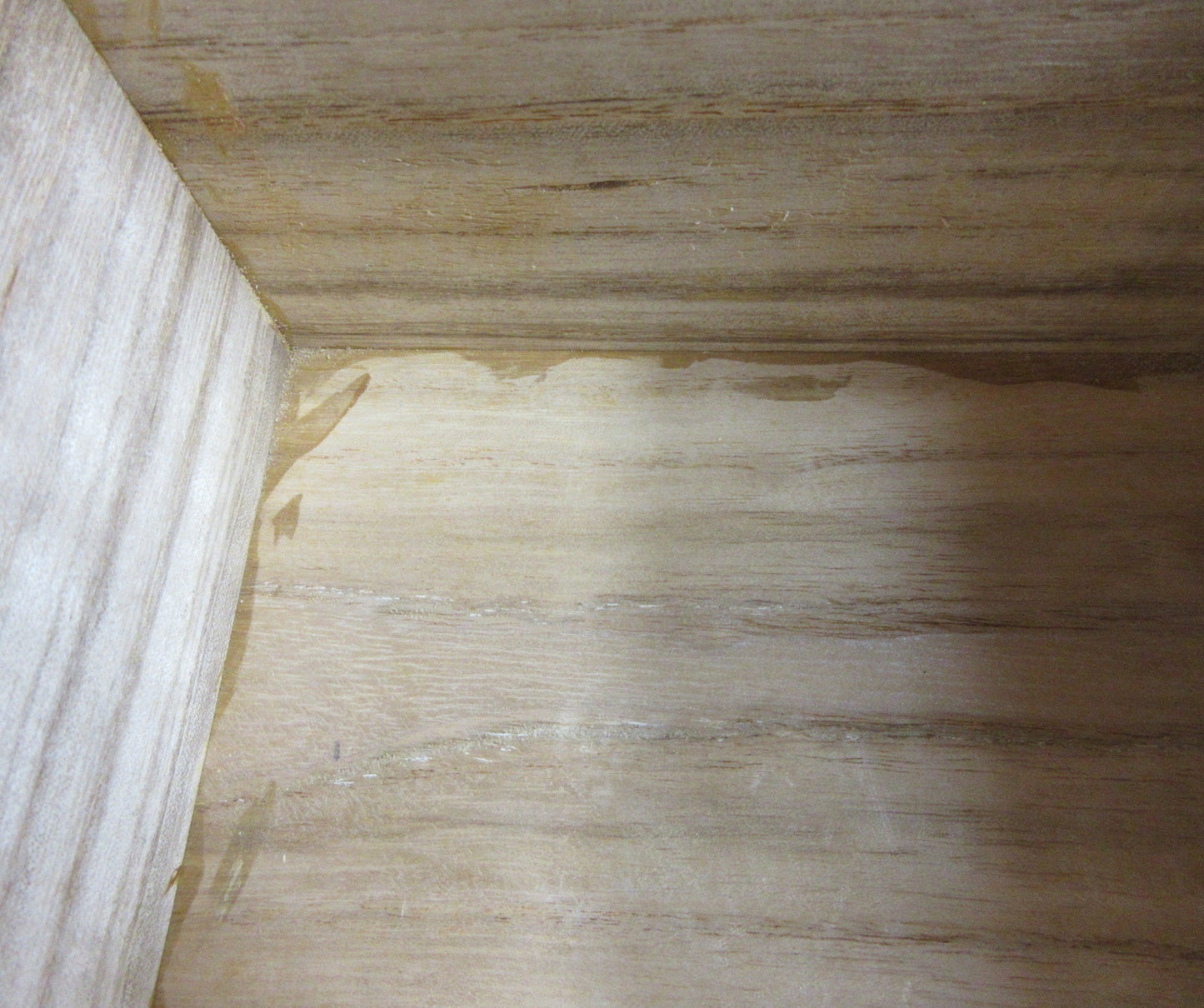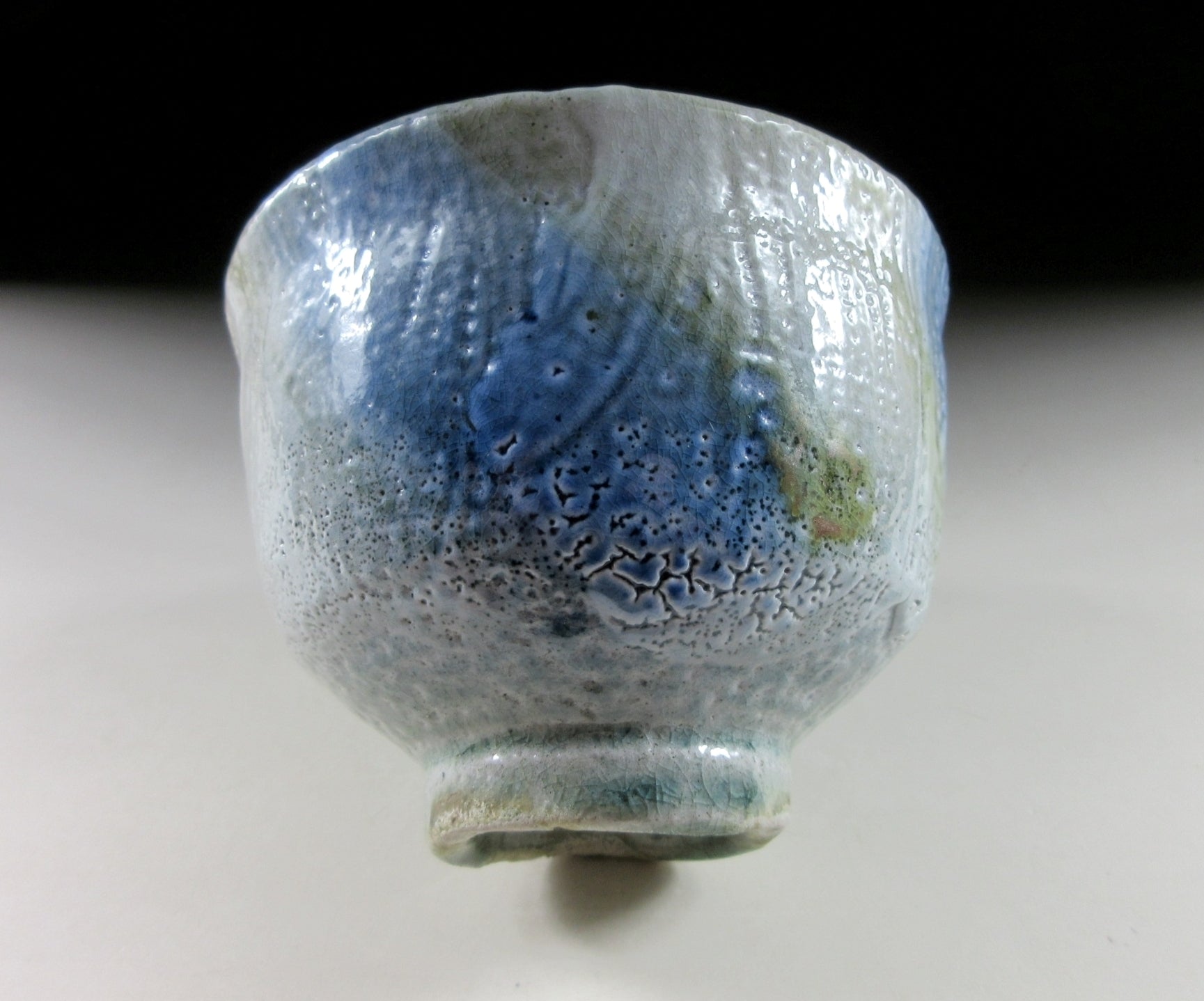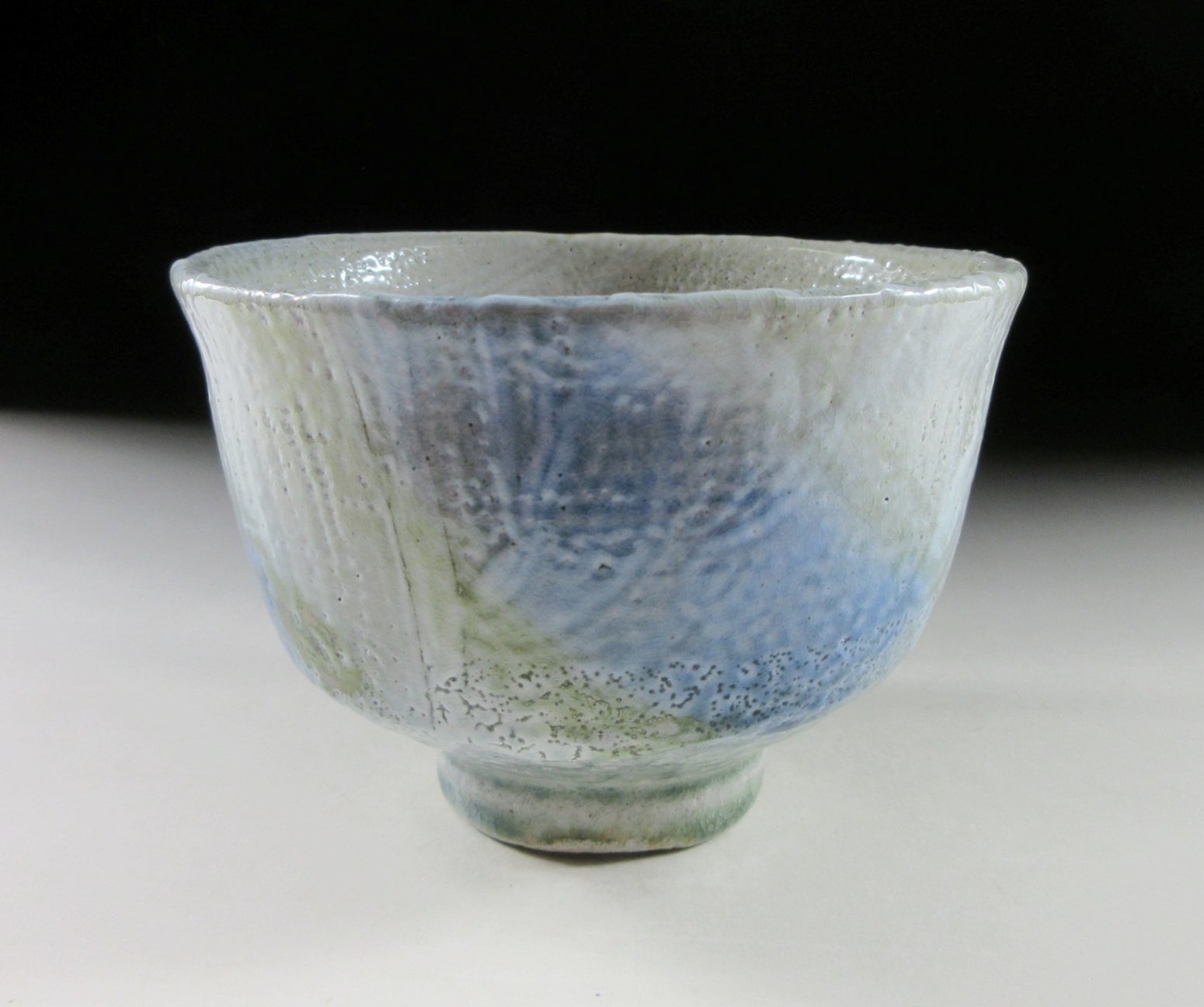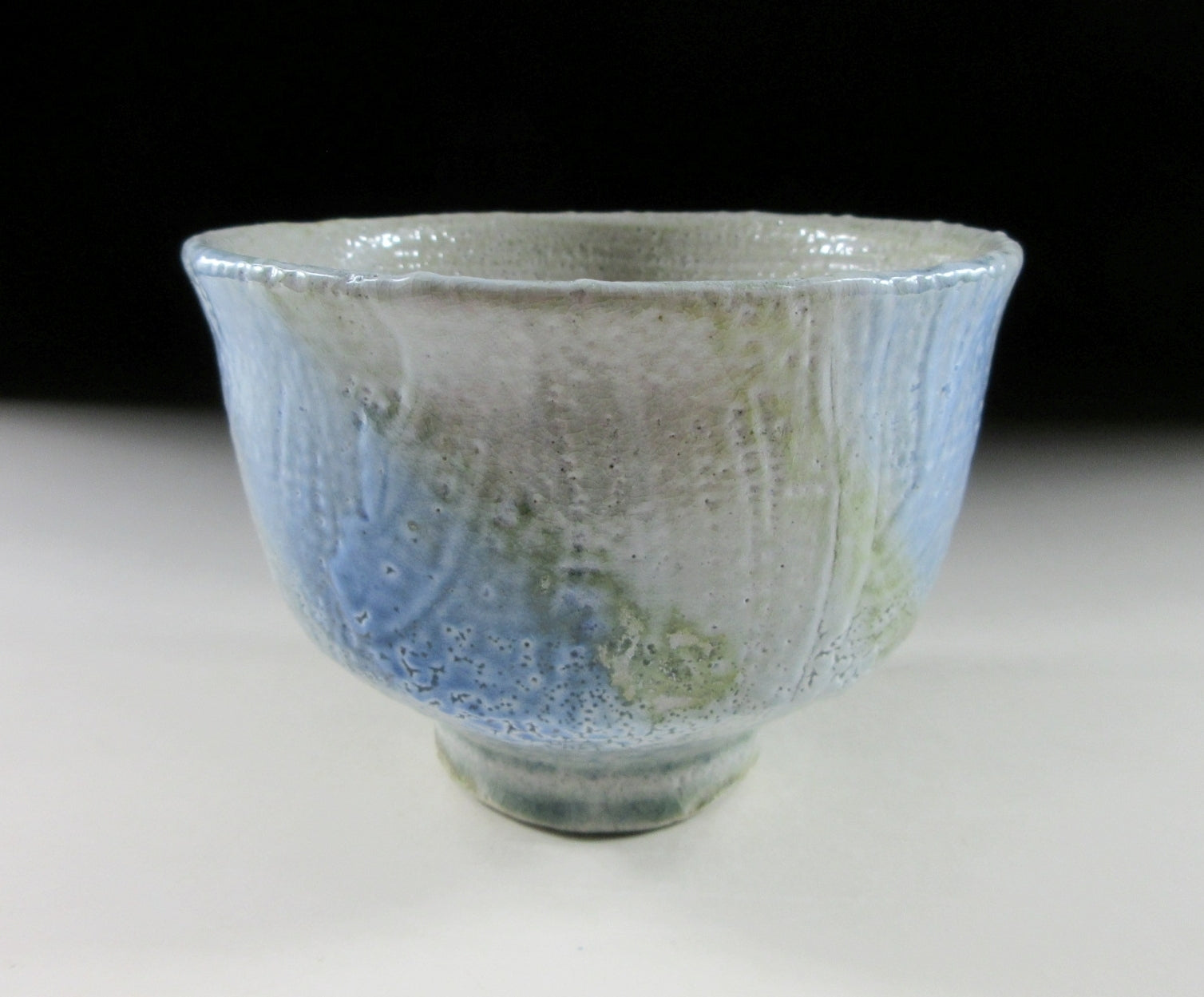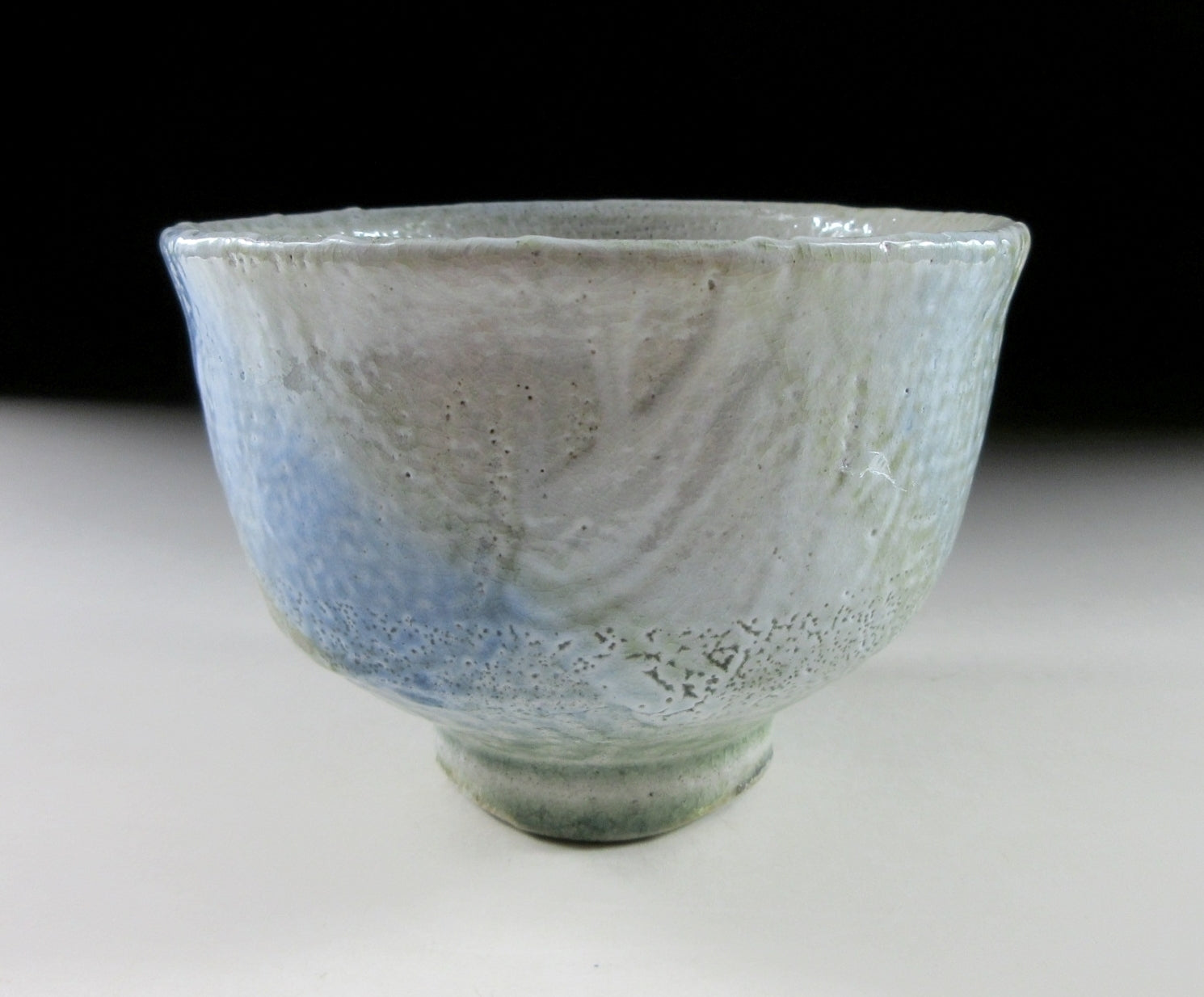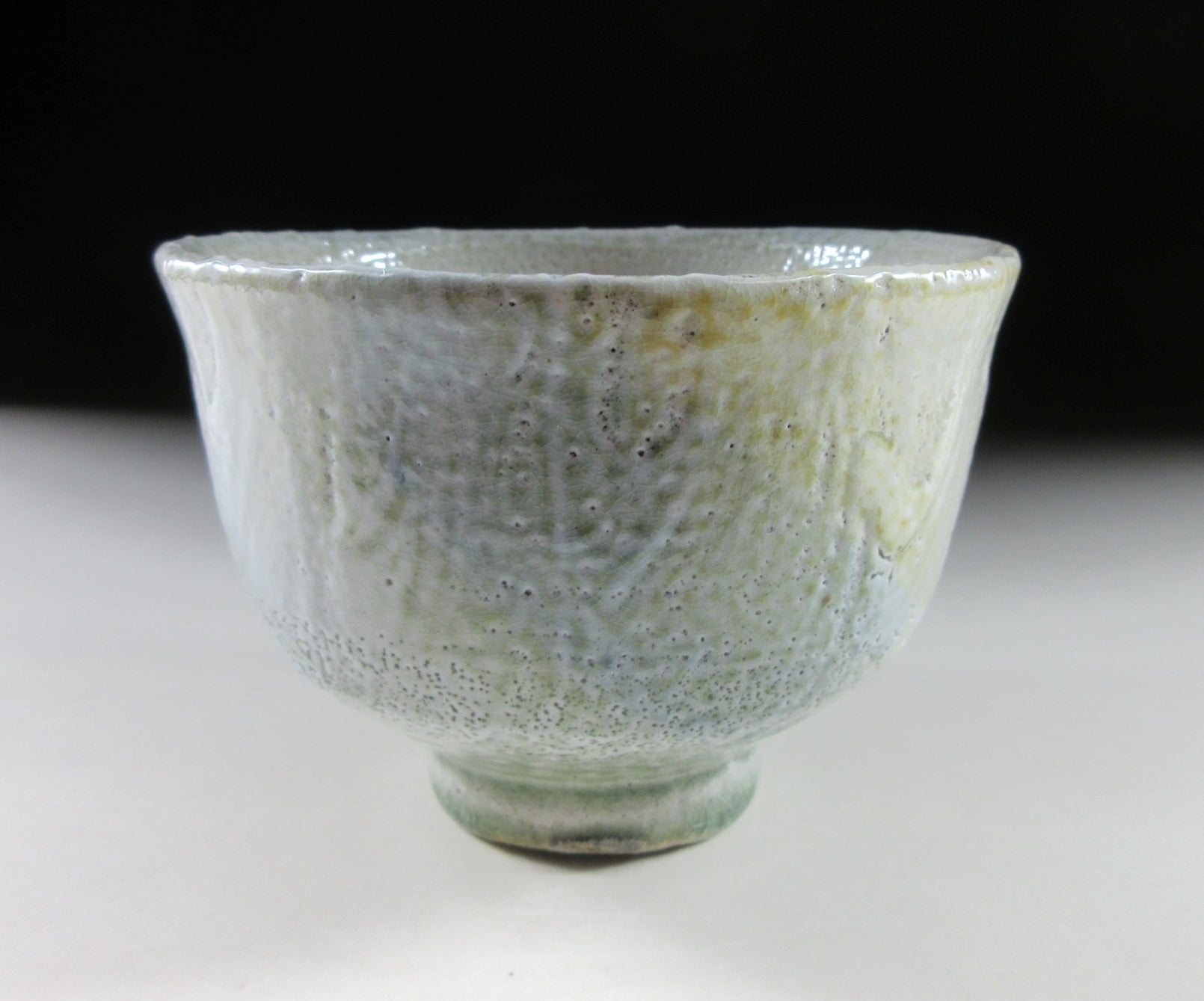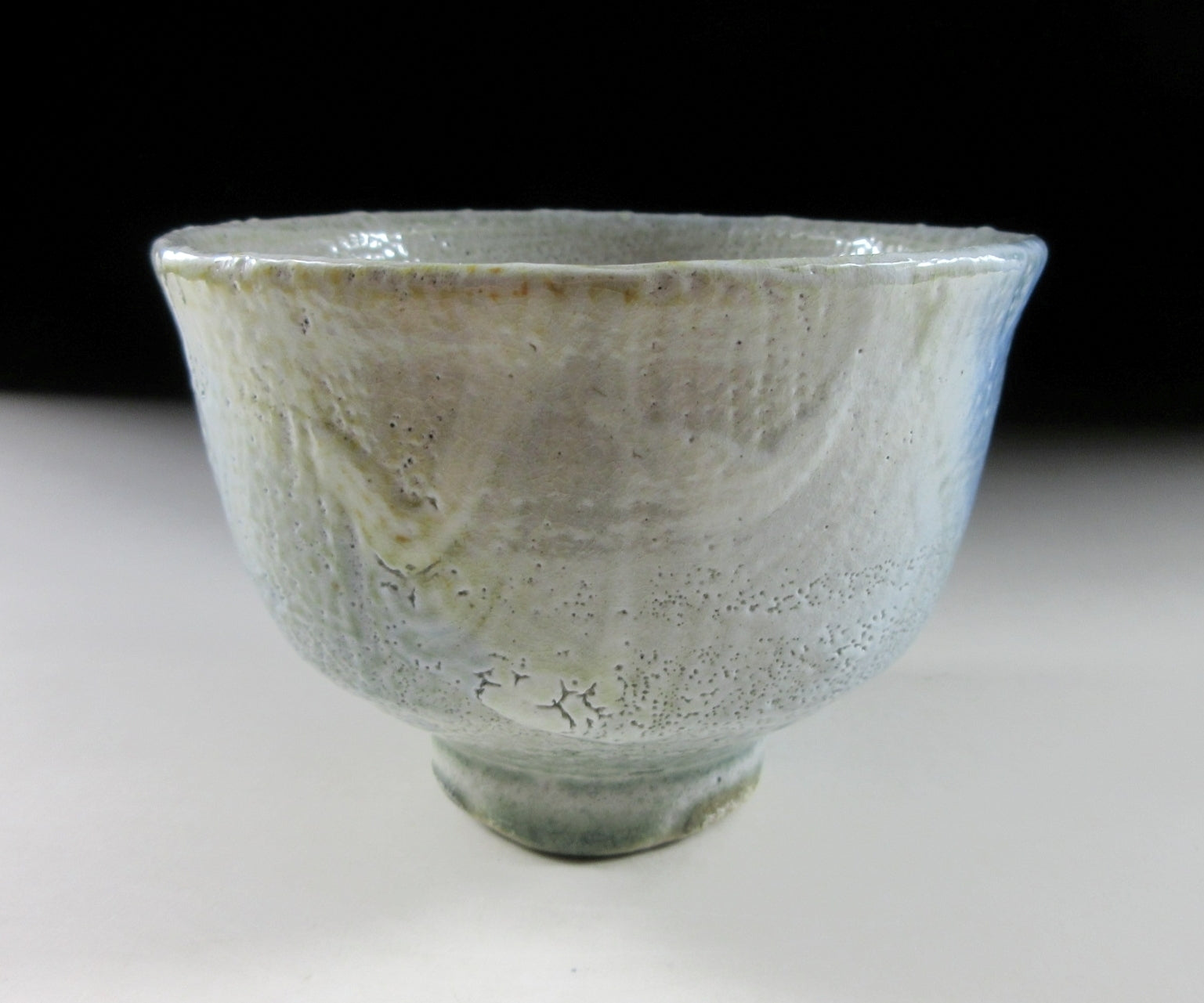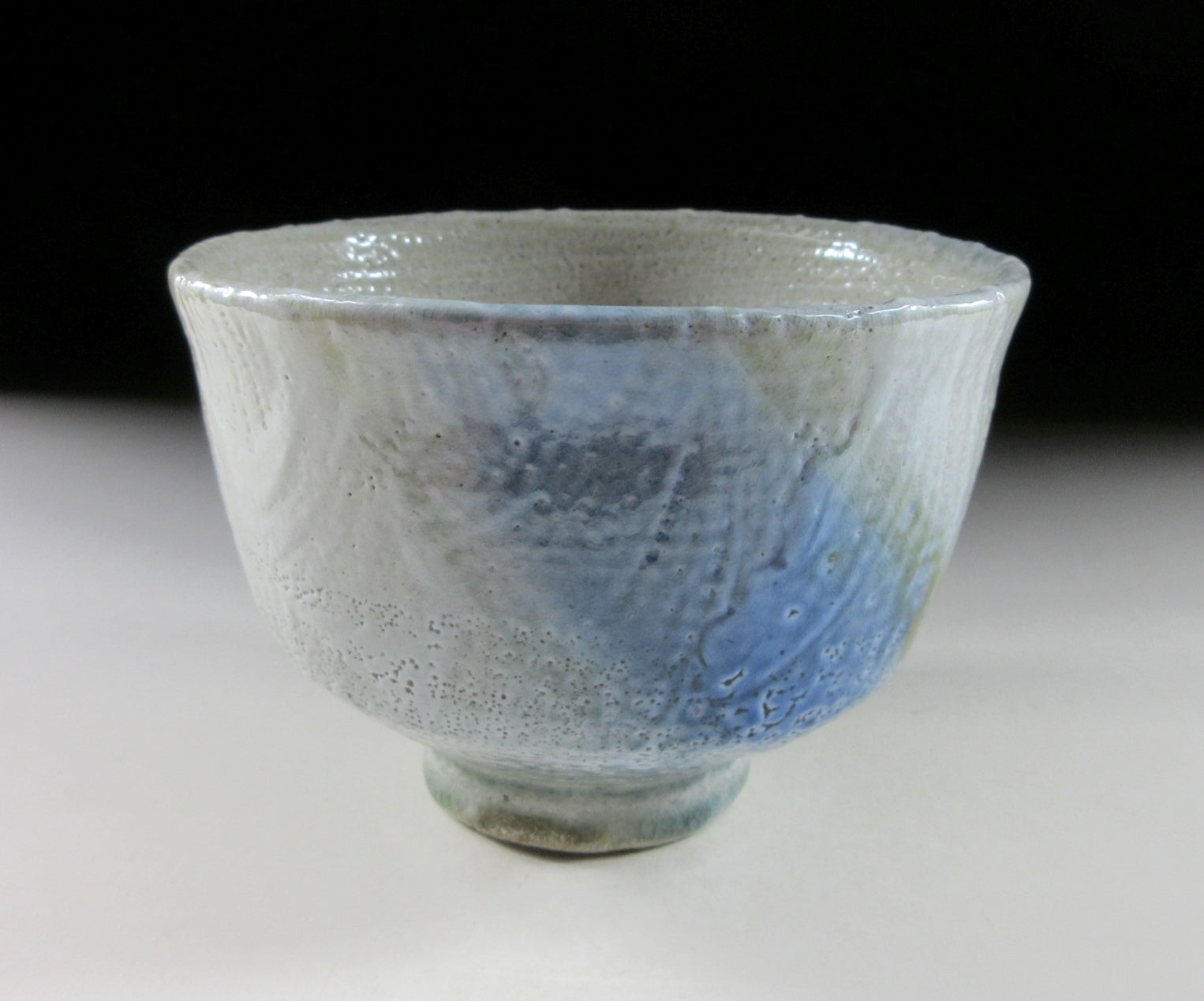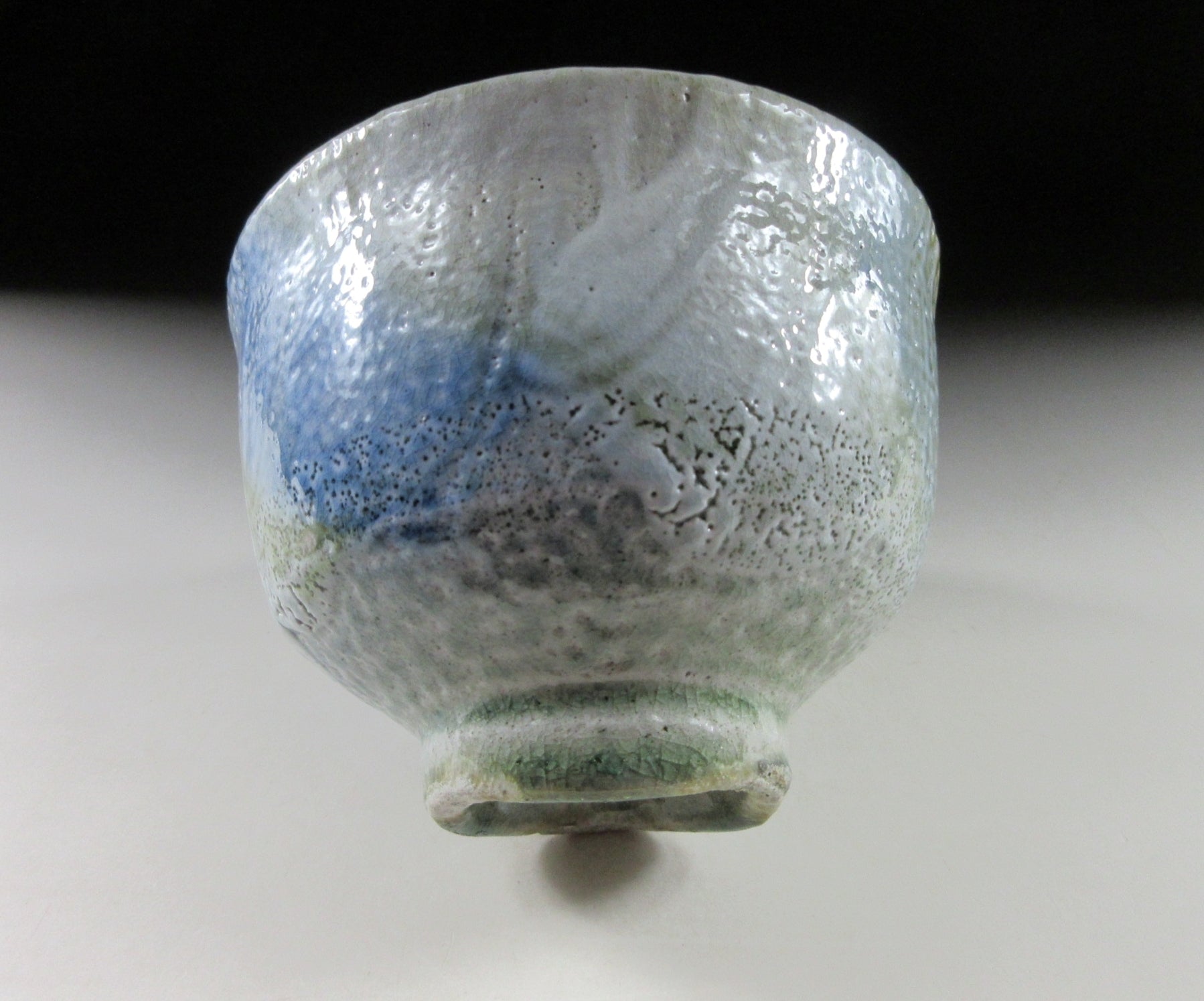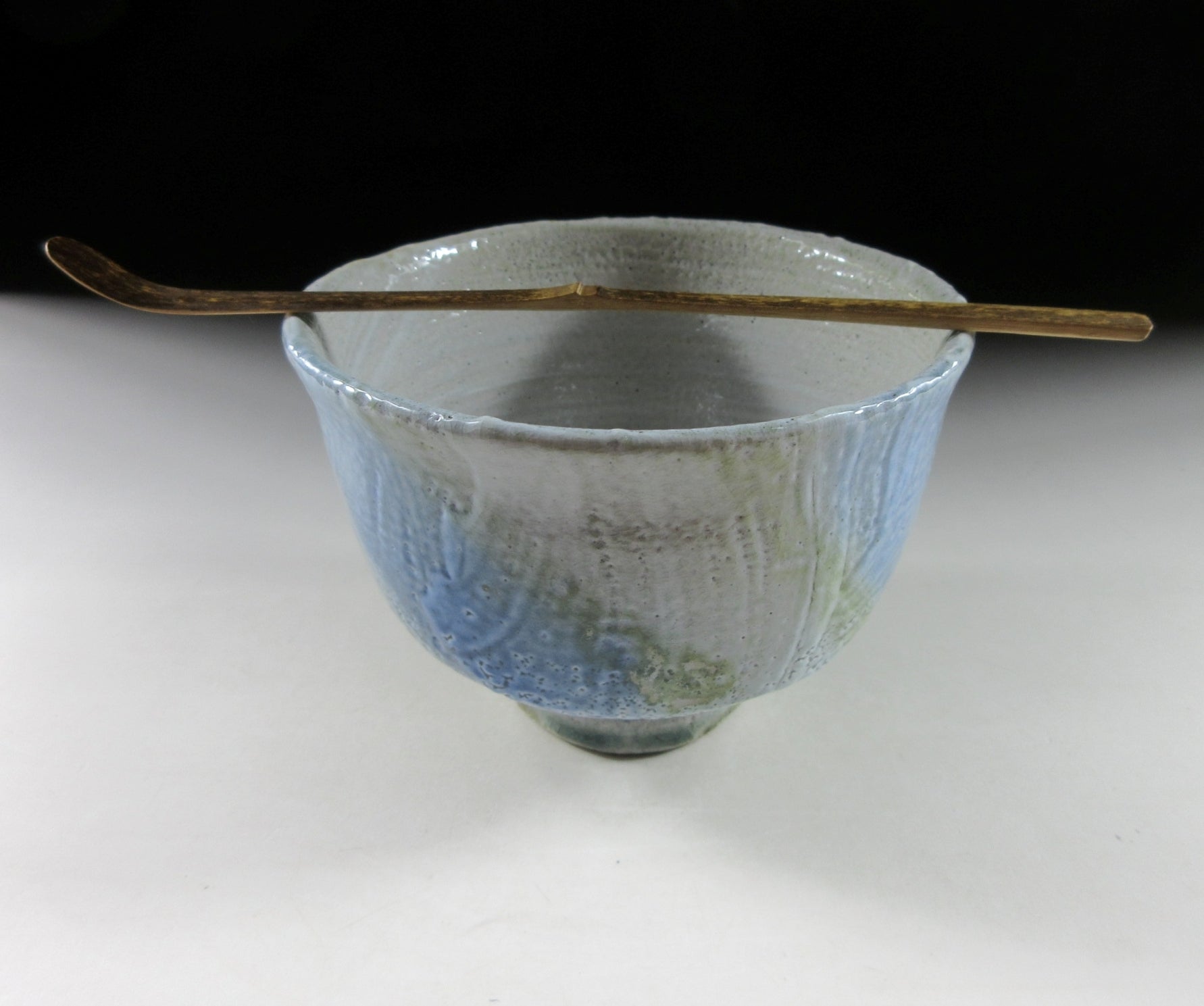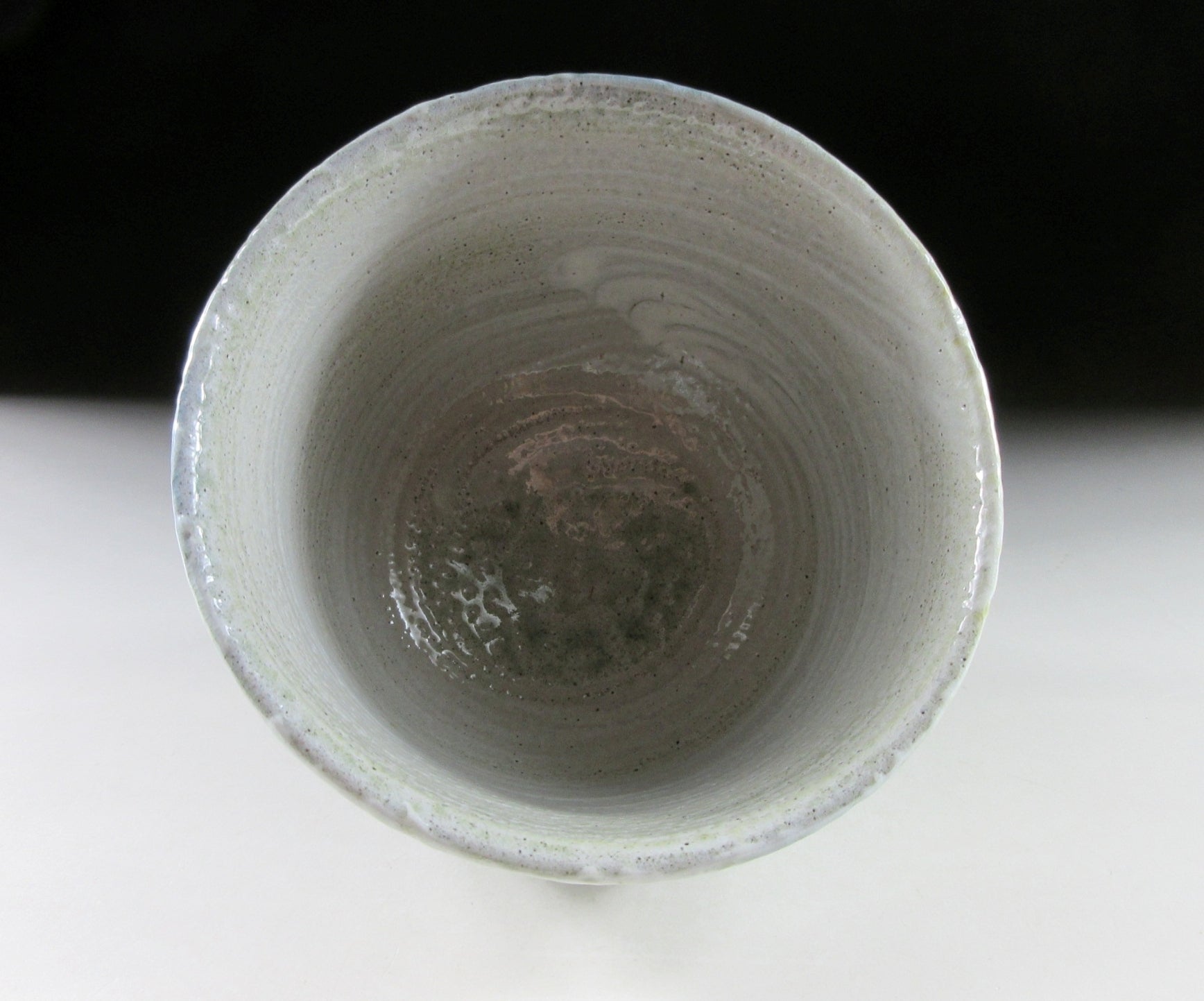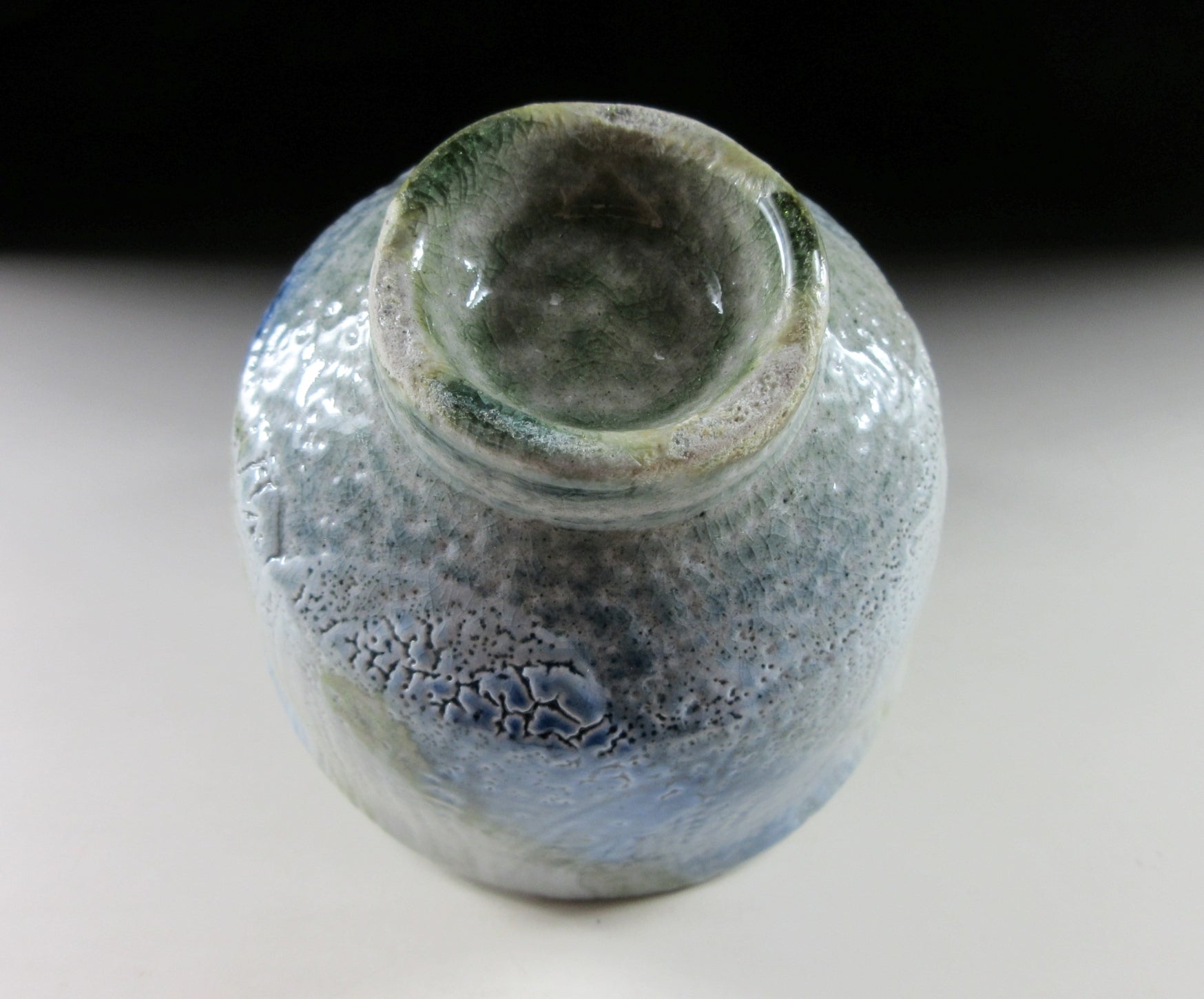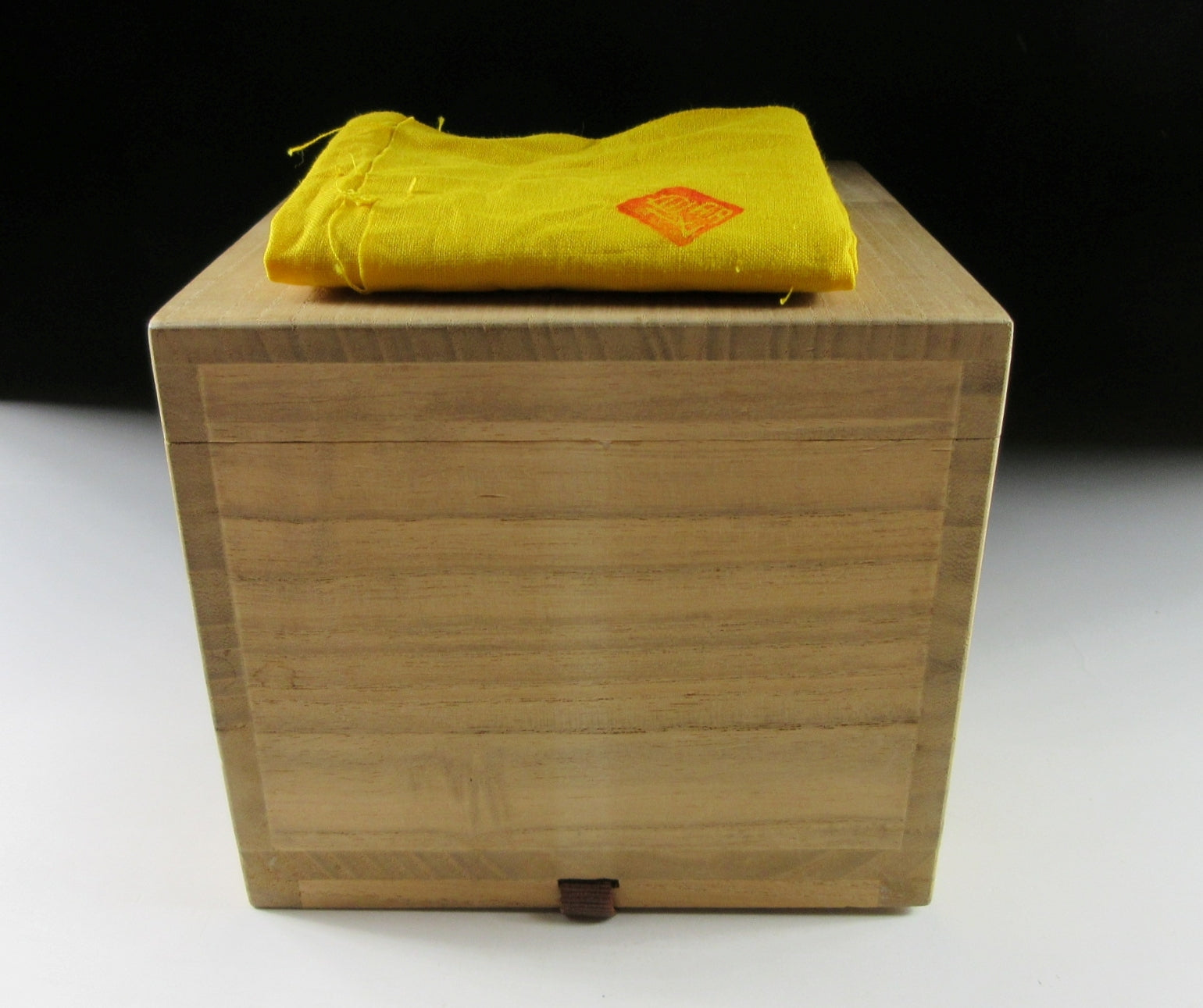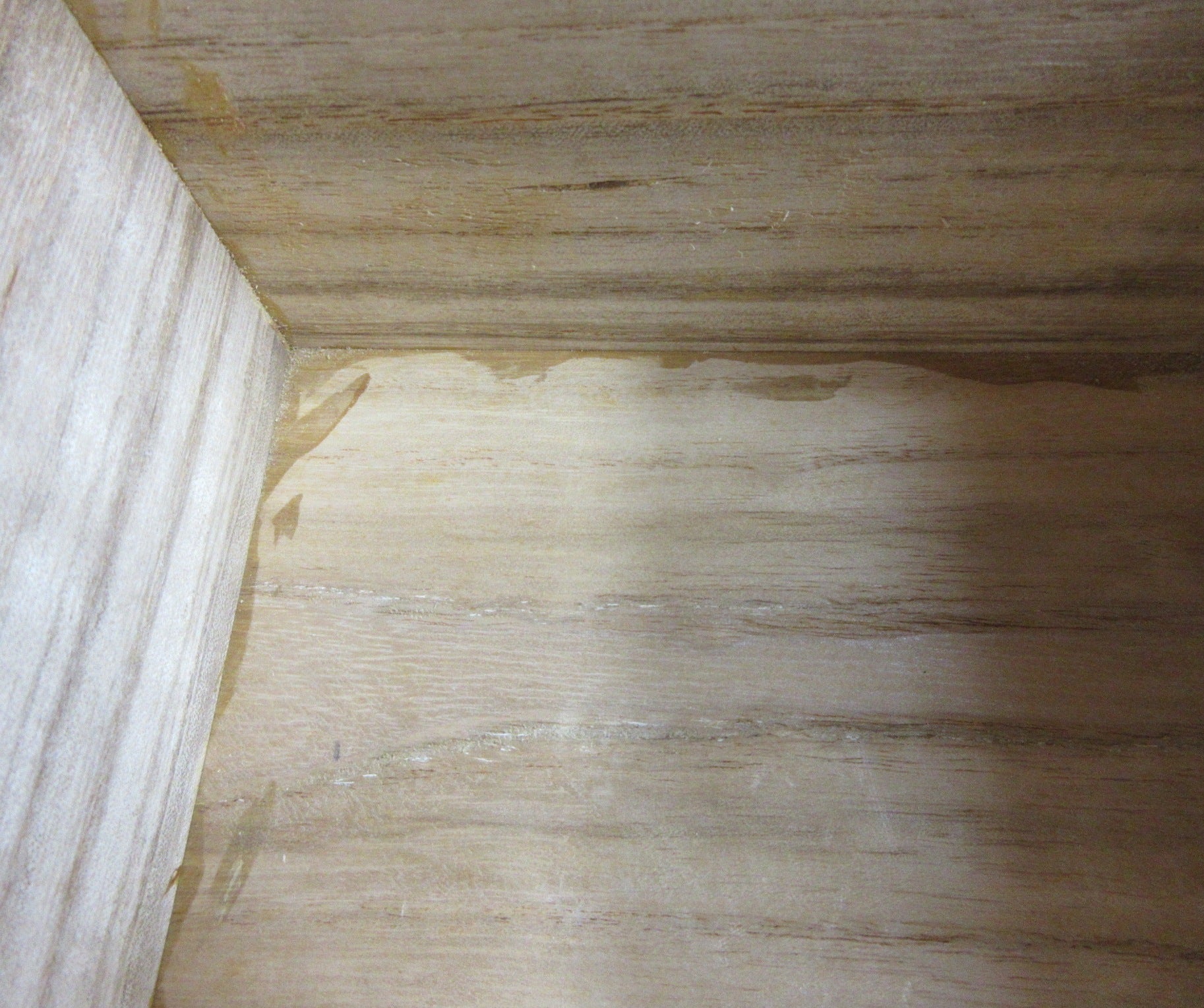Kominka Zakka
Sakuma Kenji Salt Glaze Chawan
Sakuma Kenji Salt Glaze Chawan
Couldn't load pickup availability
*SHIPPING OPTIONS VARY DEPENDING ON THE DESTINATION, PLEASE SCROLL TO THE END OF THIS LISTING FOR MORE DETAILS.
This listing is for a wood-fired Mashiko-ware chawan made around 40-50 years ago by noted potter, Sakuma Kenji. It is wheel-thrown and features salt glaze with cobalt blue and iron brown pigments over white slip. Some of the glaze has crawled during the firing process, and vitrified ash can be found on the bottom. This piece is quite robust and fits comfortably in the hand. It comes with its original wooden storage box, as well as a stamped turmeric coloured wrapping cloth for when the item is not in use. *PLEASE NOTE THAT THE BAMBOO TEA SCOOP IS NOT INCLUDED.
Sakuma Kenji (1936-1984) is a Mashiko potter and the fourth son of distinguished potter, Sakuma Totaro. He studied under his father and went on to establish his own kiln in 1961. In 1970 he opened a gallery in neighbouring Utsunomiya city, and in 1973 he was awarded First Prize at the Tochigi Prefecture Art Festival. In 1974 he was featured in an article written by a prominent writer in Mashiko, and he participated in numerous exhibitions alongside his father. In 1976 he succeeded his father as the third generation master of Sakuma Gama after his father’s passing, and he held his first solo exhibition. He merged his kiln with his father’s, and was awarded the highly coveted Blue Ribbon Award by the Japanese Government the same year. In 1979 he opened Sakuma Totaro Memorial Hall to exhibit his father’s work. He unfortunately passed away in 1984 at just 48 years of age, his son Sakuma Toya, succeeded him as the fourth generation. **Fellow sellers, this information was researched by Kominka Zakka and CANNOT be used in your own listings.
Mashiko-ware is pottery produced in the area around Mashiko in Tochigi prefecture. It began in the mid-1800s after good quality clay was found in the local. There was a large demand for everyday cooking vessels in Tokyo so the number of workshops in Mashiko expanded and many craftsmen took up the trade. In the early 1900s Shoji Hamada took Mashiko-ware to a whole new level when he began promoting the folk art movement. Mashiko-ware is probably best known for its brown glazes along with splashes of red, black, green or white.
Sizes
Box: H.13.8cm (5.4”) x 15.7cm (6.1”) x 15.7cm (6.1”)
Chawan: H.8.8cm (3.4”) x Dia.12.5cm (4.9”)
Condition
It’s in very good condition with no chips or cracks, the wooden box however has glue residue on the interior. This piece may well be an unused item, both the box and the bowl are in really good shape.
THESE ARE SHIPPING ESTIMATES BASED ON THE CURRENT GLOBAL SITUATION
**Germany, France, Greece, Spain, Poland, Austria, Slovakia, Lithuania, Slovenia: NO SHIPPING. Very strict and expensive packaging laws in place and we are not licensed to send products to these countries. We have no plan to register at this time because the process is in some cases very expensive and complicated, plus each country has its own set of regulations and application process.
**USA, UK, Canada, Australia, New Zealand, Switzerland, Norway: Airmail Small Packet (approx. 15-28 days). Combined shipping available up to 2kgs for Airmail Small Packet (please send us a message).
**Asia: Airmail Small Packet (approx. 15-21 days). Combined shipping available up to 2kgs for Airmail Small Packet (please send us a message).
**Central Asia, Middle East, South Africa, Brazil, Mexico: EMS Express 10-15 days.
**Russia: No shipping methods available.
Share
